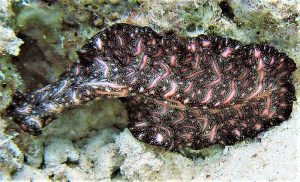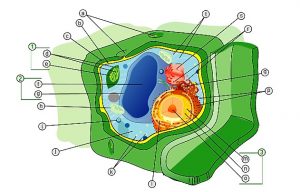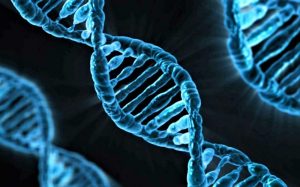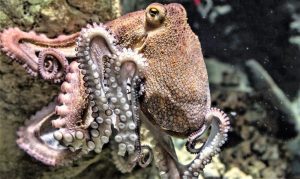Flatworms
Flatworms, also called plathelminths, are a group of invertebrates that have a soft body and are generally very flattened. Several species of flatworms can live outdoors, but about 80 percent of all are parasites, that is, they live in or in another organism and feed on it. They are symmetrical bilaterally, so the right and left sides are similar and do not have specialized respiratory systems, skeletal and circulatory systems. The body is not segmented, and the spongy connective tissue constitutes the so-called parenchyma and fills the space between the organs.
What are flatworms?
They are organisms that do not have vertebrae. Most of them are parasites and do not have respiratory or circulatory system and many of them do not have had digestive or anus.
Characteristics of flatworms
The main characteristics of flatworms are the following:
- The soft body of a flat worm is ribbon-shaped, flattened on the back and bilaterally symmetrical.
- They are the simplest and most organ-bearing animals of the triploblastic group.
- The organ systems are formed from three germinal layers: an external ectoderm and an internal endoderm, with a mesoderm between them.
- Flatworms do not have a true circulatory or respiratory system, but like all other animals, flatworms consume oxygen.
- They breathe into their integument; and the gases diffuse directly through their humid outer surface, which is known as integumentary exchange.
- They are carnivores and dig for food.
- They can be found mainly in rainy, marine and terrestrial environments that are humid.
Types of flatworms
We can mention four different types of flatworms, which are:
- Turbellarians: they are also known as planarians and have an autonomous life. They move through cilia and live in the sea, although some have adapted to fresh water and land.
- Monogenous: they are mainly parasitic species of amphibians and fish. They cannot act as parasites in humans. They are hermaphrodites with crossed reproduction.
- Trematodes: they are found in animals and some species can affect man. They can measure several centimeters and have suction cups to fix on the host. They are hermaphrodites and reproduce sexually by expelling all eggs with feces. Then the eggs hatch and first transform into crabs or mollusks, then adhere to aquatic plants and there are eaten by some animals infecting them.
- Céstodos: they are the most recognized and are parasites found in man. They have a head full of hooks that they use to adhere to the host’s intestine. They reproduce by auto fecundation that is to say that they have sexual and masculine organs.
Digestive system of flatworms
The digestive system of flatworms consists of the mouth, which is located in the midline of the belly and can sometimes also change position. They have a pharynx in which can be found a series of glandular cells that have the function of making mucus to help swallowing. They are also responsible for producing enzymes that begin extracellular digestion by evagination of the pharynx.
We find several types of pharynx in them, the simple one, the bulbous one and the folded one.
Circulatory system
Flatworms are beings that have no heart, veins, arteries, capillaries, hemolymph or any type of circulatory fluid. The circulation they possess occurs between cells or intercellularly and is responsible for transporting substances by diffusion from cell to cell.
Gases enter the body surface and then travel from one cell to another by diffusion. Because they are parasitic animals that live at the expense of the host, they do not really need a digestive or circulatory system.
Excretory system
The excretory system is a protonefridial system, consisting of a pair of branched longitudinal ducts or lateral channels. These side channels are equipped with a special cell known as flamingos.
Life cycle
The flatworms are in charge of carrying out a set of activities known as the Life Cycle. In this cycle, one of the most important actions is the one of feeding in which the nutrients and the substances that help to satisfy the energy needs are incorporated depending on the relation that they have with the environment and also with other individuals, already be of its same or another species and finally it includes also the reproduction that consists in engendering new beings continuing with the species.
Habitat
Depending on their characteristics, flatworms can be found in either salty or freshwater bodies of water. They can also be found in terrestrial habitats, as long as these are quite humid, some of them may even inhabit the sand of the watery bottoms. A good part of them are benthic, coexisting at the bottom of the waters on rocks or mixed with algae.
In their parasitic form they may remain within some types of hosts, such as freshwater specimens. Another habitat of flatworms is the human body, for example, the tapeworm Saginata, are housed in the first areas of the small intestine of humans and can reach lengths of 2 to 15 meters.
Curiosities
Some curiosities of flatworms are the following:
- The flatworms or plathelminths do not have feet so they must move through vibrations of the ciliated epithelium.
- It is estimated that approximately 60 million people have been invaded by flatworms, especially the tapeworm.
- Although medical treatment is given, the best way to eliminate them is through surgery.
- Some of them can regenerate parts of your body when some of them are missing.
- They are very sensitive to water pollution.
Examples of flatworms
- Tapeworm: intestinal parasite of vertebrates
- Notoplana acticola
- Plan
- Staves
- Cercaria
- Taenia solium
How to cite this article?
Briceño V., Gabriela. (2019). Flatworms. Recovered on 23 February, 2024, de Euston96: https://www.euston96.com/en/flatworms/










